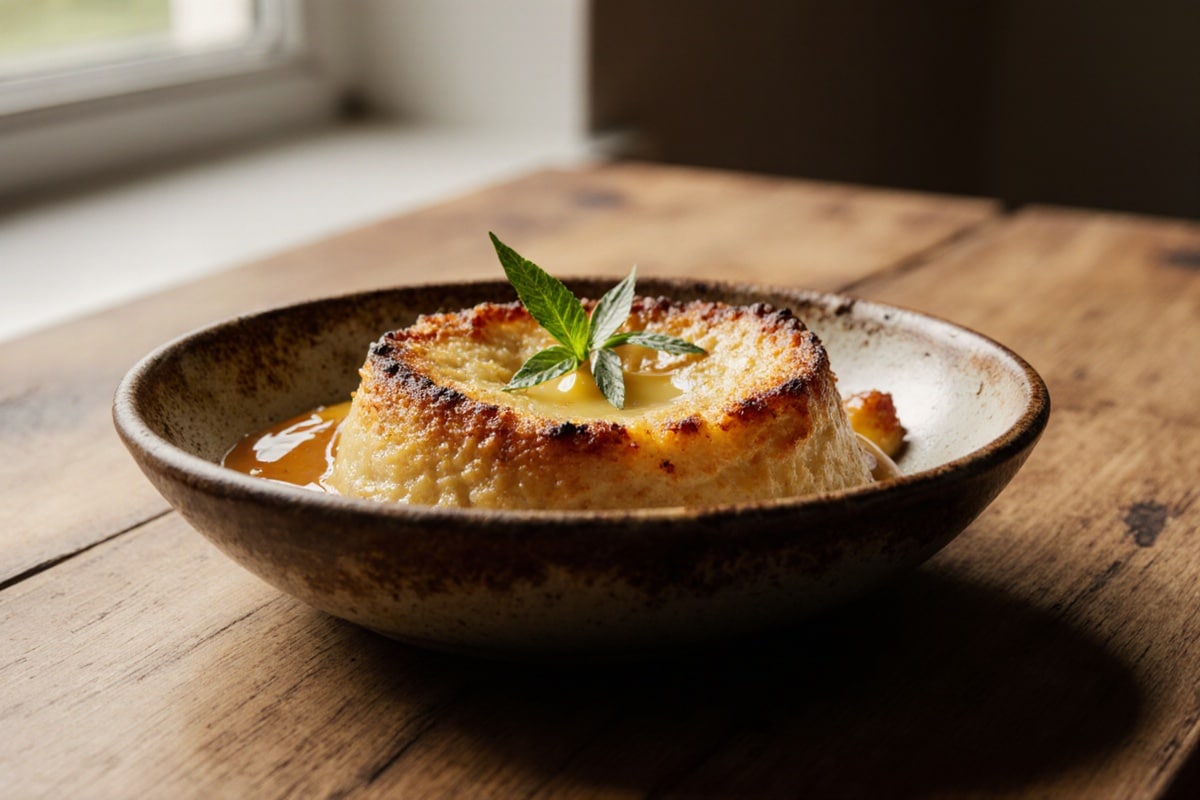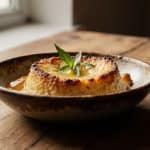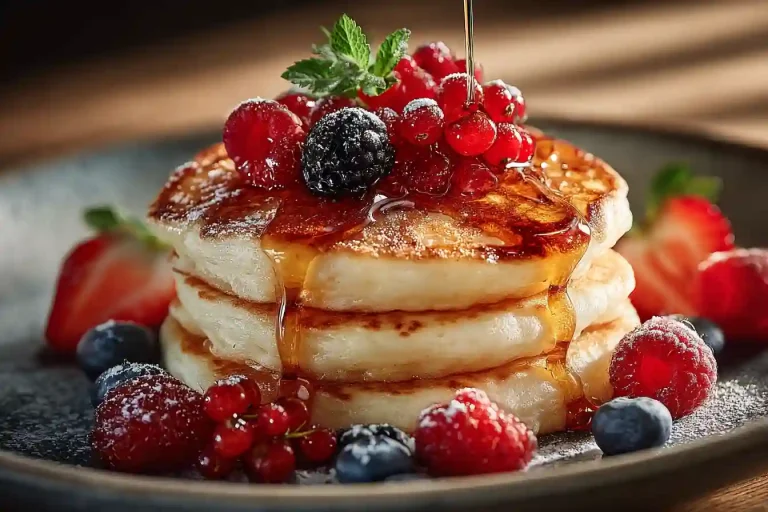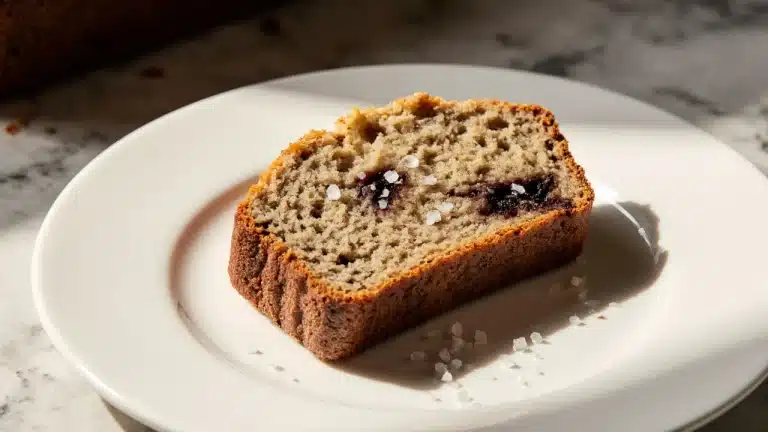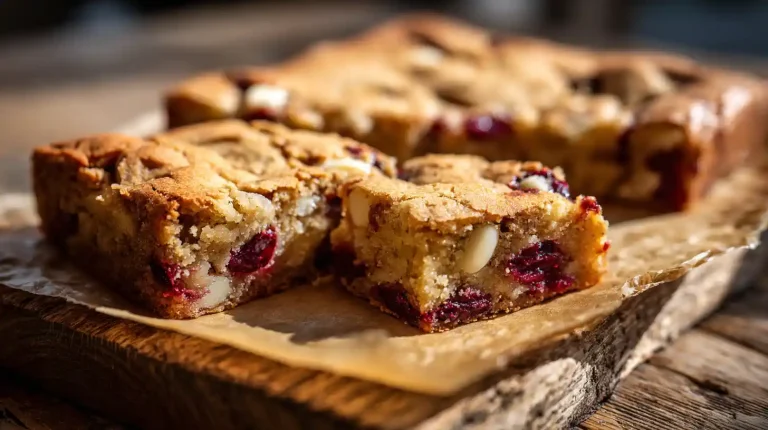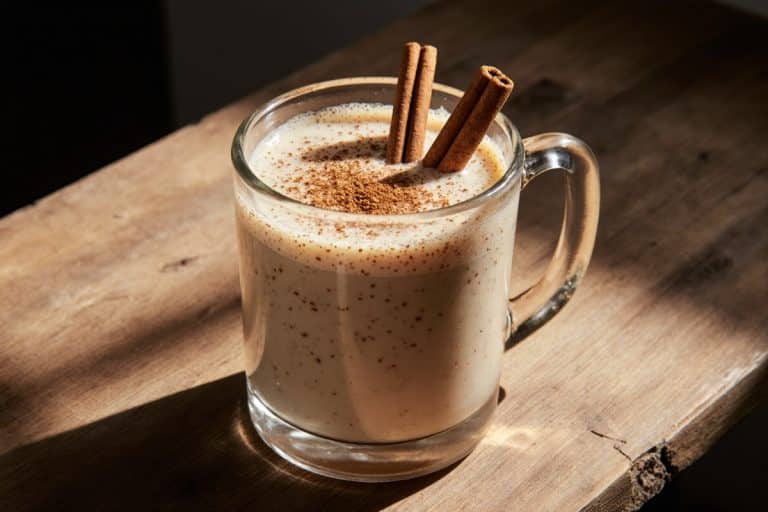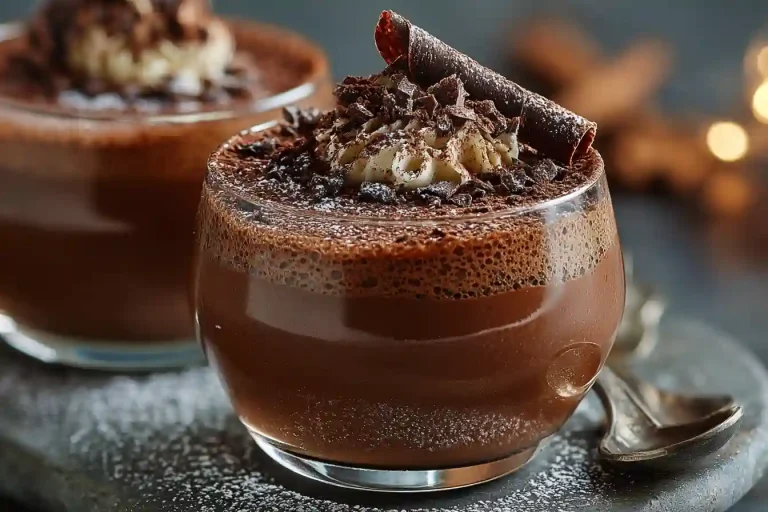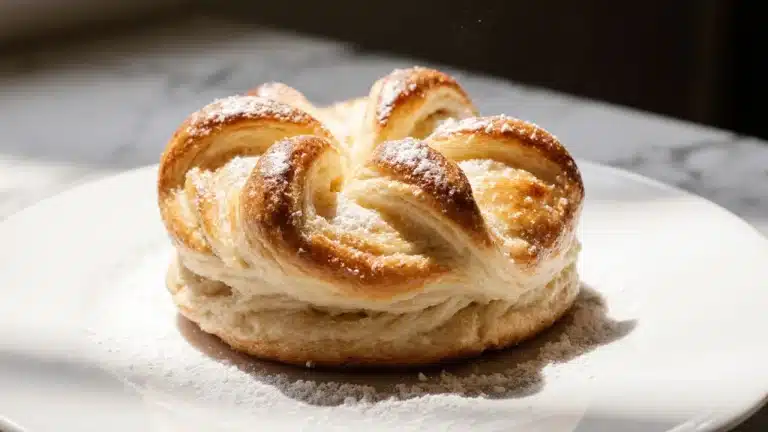Gordon Ramsay’s Ultimate Bread and Butter Pudding: 5 Mouthwatering Secrets
Listen up, home cooks. Gordon Ramsay’s bread and butter pudding isn’t just a dessert—it’s a culinary rebellion against bland, boring sweets. I’ve burned more puddings than I care to admit before Ramsay showed me the light. This isn’t just a recipe; it’s a transformation. Imagine taking stale bread and turning it into a restaurant-quality dessert that’ll have your guests thinking you’ve secretly trained in a Michelin-star kitchen. The magic? It’s all about precision, technique, and fearless flavor. Whether you’re a kitchen novice or a home cooking warrior, this recipe will change how you think about dessert. No more soggy, sad puddings. We’re creating a masterpiece that’s rich, boozy, and absolutely unforgettable.
Master Gordon Ramsay’s Bread and Butter Pudding
Ingredients
Equipment
Method
- Preheat oven to 180°C (350°F).
- Generously butter a shallow ovenproof dish and each slice of bread on both sides.
- Layer bread in the dish, interspersing dried fruit between slices.
- Beat eggs and yolks with sugar until creamy and pale. Gradually incorporate cream, milk, and Baileys.
- Scrape seeds from the vanilla pod into the custard mixture for maximum flavor.
- Pour custard over bread, gently pressing to submerge. Allow 20-60 minutes soaking time.
- Place the dish in a roasting tin, add boiling water halfway up the sides, and bake for 40-50 minutes until golden and slightly wobbly in the center.
- Warm apricot jam and brush over the surface after baking. Let stand for 15 minutes before serving.
Nutrition
Notes
Love this recipe?
Give us 5 stars and comment!
Master Gordon Ramsay’s Bread and Butter Pudding Technique
Precision Bain-Marie for Silky Custard
Professional chefs like Ramsay know that controlling heat is everything. The bain-marie method prevents custard from curdling by creating a gentle, even heat environment. Water bath temperatures must stay consistent, which means carefully adding boiling water to your roasting tin and maintaining it around your pudding dish. This technique ensures your custard stays creamy and smooth, so you won’t end up with those unsightly scrambled egg moments.
Signature Flavor Complexity
Ramsay takes classic bread and butter pudding to the next level with bold flavors. Adding Baileys Irish Cream brings a luxurious, boozy note that transforms the humble dessert. Pro tip: Don’t just pour Baileys into the custard—also consider drizzling it on post-bake for a flavor boost. The apricot jam glaze adds a sweet touch that balances the rich custard, resulting in a well-rounded dessert experience.
Strategic Resting for Perfect Texture
After baking, let your bread pudding rest for about 15 minutes. This important step lets the custard fully set while the flavors blend together beautifully. Rushing to serve can lead to a runny and underwhelming pudding. The residual heat continues to cook the custard gently, ensuring a silky texture that’s just right—not too firm and not too liquid.
Nutrition and Ingredient Insights
Nutritional Breakdown
Each 100g serving offers around 260-270 kcal, making this a moderately indulgent treat. You’ll get about 5-6g of protein from the eggs and dairy, along with 13-15g of fat. The carbohydrate content sits around 25-28g, primarily from the bread and added sugar. Bonus nutrition points: the eggs and dairy provide vitamin A, calcium, and iron.
Essential Ingredients
When it comes to bread and butter pudding, quality matters. Choose a nice white bread or French stick, preferably slightly stale. Butter generously all around. Your core ingredients include eggs, sugar, double cream, whole milk, and optional Baileys. Adding dried fruits like golden raisins or cranberries can enhance both texture and sweetness. A vanilla pod will elevate the dish with its rich aroma.
Health Perspective
This dessert isn’t exactly health food, but it does have some positives. You get decent protein and calcium from the eggs and dairy. Moderation is key. On the downside, it contains higher levels of saturated fat and sugar. Perhaps go for smaller portions or save it for special occasions. If you want lighter options, try reduced-fat dairy or alternative sweeteners.
Foolproof Cooking Method
Bread Preparation Technique
Start by generously buttering a shallow ovenproof dish. Don’t hold back on the butter—it’s essential for flavor and keeps everything from sticking. Make sure to butter each slice of bread thoroughly on both sides. Layer the bread in the dish, tucking in dried fruits between the slices to create delightful fruity pockets in every bite.
Custard Construction
Beat the eggs and yolks with sugar until they become creamy and pale. Gradually mix in the cream, milk, and Baileys. Take your time to prevent lumps and ensure a smooth custard. If you’re using a vanilla pod, scrape the seeds directly into the mixture for a burst of flavor. You want a silky, pourable custard that soaks into every nook of the bread.
Precision Baking
Pour the custard over the bread, gently pressing down to submerge it. Let it soak for 20-60 minutes. Longer soaking means more flavor. Place the dish in a roasting tin and add boiling water halfway up the sides. Bake at 180°C (350°F) for 40-50 minutes until golden and the custard is just set—slightly wobbly in the center.
Finishing Flourishes
Warm some apricot jam and brush it over the surface for a glossy finish. Let it sit for 15 minutes to set the glaze and finish cooking. Serve warm with an optional additional Baileys drizzle. This final glaze adds a touch of professionalism and depth to the flavor.
Preventing Common Culinary Catastrophes
Custard Crisis Management
No one wants to deal with curdled custard. Keep a consistent water bath temperature and steer clear of direct high heat. If your custard begins to separate, it’s usually due to temperature shock or overheating. The bain-marie method helps to buffer against these problems.
Texture Troubleshooting
A dry pudding suggests insufficient soaking or inadequate butter coverage. Always butter the bread thoroughly and ensure proper custard absorption. On the flip side, to avoid sogginess, don’t over-soak the bread and watch how long it sits after glazing.
Baking Precision
Underbaking leads to raw, eggy custard. Your aim is a golden top with a slight jiggle in the center. Pay attention to visual and textural cues: the pudding should be set but not firm, with a little jiggle when you gently shake it.
Creative Variations and Serving Magic
Delicious Alternatives
Try using pains au chocolat or brioche instead of white bread for an even richer texture. You can also sprinkle in cinnamon or nutmeg. Other liqueurs like Amaretto or Cointreau can change the entire flavor profile. Feel free to experiment with different dried fruits or whip up vegan versions using plant-based milks and creams.
Complementary Companions
Serve this delight with pouring custard, crème anglaise, or vanilla ice cream. Fresh berries or a fruit compote can really brighten it up. A light espresso or tea pairs perfectly with the pudding’s richness. For an extra indulgent touch, add a dollop of clotted cream.
Seasonal and Dietary Adaptations
Create winter versions with warming spices, or light summer variations with lighter cream. Need a dairy-free option? Use coconut or almond milk. Keep the core technique in mind while allowing for some personal creativity. The beauty of bread and butter pudding lies in its flexibility. Bread and butter pudding truly adapts to your taste.
Video tutorial: bread and butter pudding
FAQ – gordon ramsay bread an d butter pudding
Question: Can I make this without Baileys?
Answer: Absolutely. Use vanilla extract or another liqueur, but don’t compromise on flavor.
Question: How long will the pudding keep?
Answer: 2-3 days in the refrigerator, but trust me—it won’t last that long.
Question: Can I use gluten-free bread?
Answer: Yes! Just ensure it’s a sturdy bread that can handle the custard soak.
Question: Is this dessert kid-friendly?
Answer: Skip the Baileys and use milk or cream. The technique remains the same.
Question: What’s the biggest mistake home cooks make?
Answer: Not buttering the bread generously. Don’t be shy—butter is flavor.
Conclusion
This pudding is more than a recipe—it’s a culinary victory. When you pull that golden, glossy dessert from the oven, you’ll feel like a kitchen champion. The aroma of vanilla and butter will fill your kitchen, and that first spoonful? Pure magic. Crisp edges, silky custard, unexpected bursts of fruit—this is cooking with confidence. Ramsay didn’t just teach me a recipe; he taught me to cook without fear. So roll up those sleeves, embrace the technique, and create something extraordinary. Now it’s your turn. Make this pudding, own your kitchen, and show the world what you’re made of.

